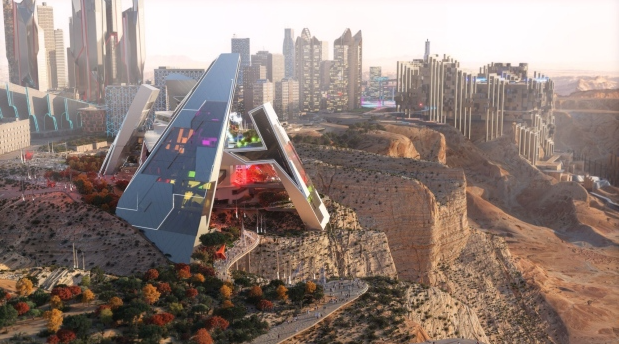Saudi Arabia: The Rising Giant in Construction

Saudi Arabia, a nation steeped in history and tradition, is now poised to become the world’s largest construction market. With ambitious projects, visionary leadership, and substantial investments, the Kingdom is reshaping its landscape and economy. In this comprehensive article, we delve into the factors driving this transformation, the key projects, and the implications for the global construction industry.
At the heart of Saudi Arabia’s construction boom lies Vision 2030, an ambitious roadmap unveiled by Crown Prince Mohammed bin Salman. This strategic vision aims to diversify the economy, reduce dependence on oil revenues, and enhance the quality of life for citizens. Key pillars include economic diversification, social development, and cultural enrichment.
According to real estate consultancy group Knight Frank, Saudi Arabia’s total construction output value is projected to reach a staggering $181.5 billion by the end of 2028. This represents nearly a 30% increase from 2023 levels. The driving forces behind this growth include:
- Residential Property: A surge in residential construction, catering to the growing population and housing needs.
- Giga Projects: These mega-scale developments, such as NEOM and Qiddiya, are reshaping entire regions and attracting global attention.
- Infrastructure Investments: Saudi Arabia is pouring vast amounts into infrastructure, including transport networks, energy facilities, and smart cities.
Let’s explore some of the standout projects:
- NEOM: This futuristic city, spanning 26,500 square kilometers, aims to be a hub for innovation, technology, and sustainability. With an investment of $500 billion, NEOM is set to redefine urban living.
- Qiddiya: Positioned as the “Entertainment Capital,” Qiddiya will feature theme parks, sports venues, and cultural attractions. The recent announcement of the Qiddiya Performing Arts Center underscores its commitment to arts and culture.
- Riyadh Metro: The capital’s metro system, with six lines covering 176 kilometers, is a game-changer for urban mobility. It’s part of Riyadh’s transformation into a vibrant metropolis.
While the vision is grand, challenges persist. Saudi Arabia must balance rapid development with environmental sustainability, workforce skills, and project execution. Additionally, the influx of foreign tourists and the hosting of global events like the World Expo (2030) and potentially the World Cup (2034) demand meticulous planning.
Saudi Arabia’s ascent as a construction powerhouse is awe-inspiring. As cranes dot the skyline and architects dream big, the Kingdom’s journey toward a diversified, resilient economy continues. The world watches as Saudi Arabia builds its future, brick by brick, with unwavering determination.





